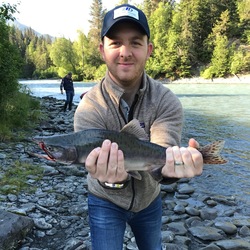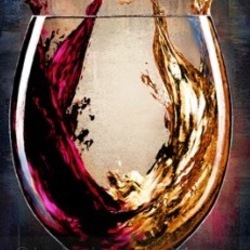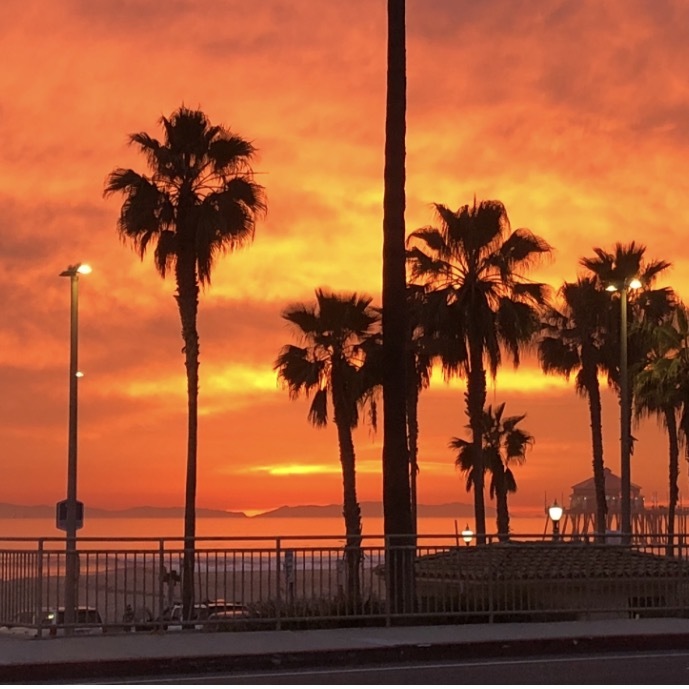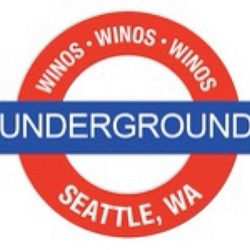4 Hands Brewing Co.
Blankiet Estate
Prince of Hearts Merlot Rosé 2015

Two Hands
Bella's Garden Barossa Valley Shiraz 2005
Holy mama. The drink by dates here are WAY OFF. 2009-2017....RI-DIC-U-LOUS. You would think this wine was maybe 3-4 years old. Youthful nose of 'Girl Scout Samoa' (now Caramel deLites) and the palate was black fruit and pencil shavings and , youthful as can be. Inky viscous wine all in the corners of your mouth. Stays there for at least 2 minutes. This wine has a youthful sweet cinnamon overripe blackberry pie note that still has tannin on the back that has not completely resolved. If you have these, it's best to probably sit on them for about 2 or 3 years. Although drinking very well now, if you pop this one you're going to be getting the more youthful side of Bella's here. — 8 years ago


Renegade Wine Co.
Columbia Valley Rosé Blend 2015
A refreshing Rhone blend rose, perfect for sunny days. Heavier 80% Syrah blend, accompanied by 11% Cinsault, 5% Counoise & 4& Grenache. Much more than your average Rose and only $10. With warmer weather of spring/summer on the horizon, its worth grabbing some!! — 9 years ago
Château de La Tour
Clos Vougeot Vieilles Vignes Grand Cru Pinot Noir



Uehara Shuzou Co. Ltd. / Echigo Beer Pub
Koshihikari Echigo Beer
I may have a new favorite Japanese beer, actually brewed in Japan ! Orion had been my go to real Brewed in Japan beer but this rice beer has a little better flavor and a better match with my sushi and saké. And only $4. For 22oz bottle at Sinju in the Pearl seems like a bargain — 9 years ago
4 Hands Brewing Co./Stone Brewing Co
Sorry Not Sorry IPA
Sweet, fruity, honey notes — 10 years ago
Rigamarole (Artisan Wine Co)
Oak Aged Okanagan Valley Red Blend
Hands down, the best value priced cheap wine. To call it cheap on its own is a misnomer though. It stands up strong to any American, Chilean or Australian red priced from 5$ to 20$. My best kept secret! — 11 years ago
And Co. Ltd
The Supernatural Hawkes Bay Sauvignon Blanc
Lovely label, engaging individualistic Sauvignon from NZ. Thanks @SalmanazarNZ 4 sharing! — 11 years ago
Enfield Wine Co.
Haynes Vineyard Syrah
Beatrice inn 4/23/14 with Emi, Lippitt and schutZi — 12 years ago
La Jota Vineyard Co.
Anniversary Release Cabernet Sauvignon 1994
Fully matured cab. Full bodied, long finish. Soft tannins. Deep dried cherries on the nose. It's peaked but should hold for 4 maybe 5 more years. — 12 years ago
Rene Rostaing
Ampodium Côte-Rôtie Syrah 2010
2010 was a very good vintage in Rhône. Rostaing is a well know producer with people that know and drink Northern Rhône wines, not so much with others that do not. The Ampodium is the entry level into Rene & Pierre Rostaing wines. It is a blend of 13 vineyards in Northern Rhône. They are simply one of the very best producers in the region. I spent an afternoon with Rene & his son Pierre tasting in the their cellar and in their La Landonne vineyard as shown in the photos. The 2010 is drinking beautifully with many good years ahead. On the nose; ripe & slightly stewed/baked fruits of; blackberries, dark cherries, strawberries, creamy raspberries, stewed plum, black raspberries, cherries, steeped fruit tea, dry crushed rocks, iron pan, some white & black pepper, bacon fat, grilled savory meats, pork, black licorice, black cherry cola, decayed & fresh red florals with violets. The body is round and medium full. The tannins round, still a little chewy & around 55% resolved. The length, texture, tension and balance are in near perfect harmony. The fruits are; round, ruby & ripe; slightly stewed/baked fruits of; blackberries, dark cherries, strawberries, creamy raspberries, stewed plum, black raspberries & cherries. Steeped fruit tea, dry crushed rocks, chalky minerals, iron pan, coffee grounds, spice, some baking spices w/hints of vanilla, white & black pepper, drying blood, dry herbs/bay leaf, dry stems, moderate levels of bacon fat & pork, grilled savory meats, black licorice, black cherry cola, decayed & fresh red florals with fresh violets for days. The acidly is round and dripping. The long finish is plush, velvety delicious and lasts & lasts. In good vintages, I would put this in blind with the best of of the best new world wines from any vintage that many love; SQN, Booker, Saxum, Alban, Cayuse, Horsepower etc.. I’d bet most of you would pick it over these producers that cost much more $$$. It’s simply one of the best pound for pound wines/producers for this varietal. Especially, for the $$$. Wow, what a wine for the $. $55 upon release. Photos of; Winemaker Pierre Rostaing and our group in their La Landonne vineyard, the small sign that barely identifies their Estate, an example of the Quartz mineral that runs throughout their La Landonne vineyard and the view back onto the river from the top of the very steep La Landonne Vineyard. Producer notes and history...Rene Rostaing produced their first wine in 1971. However, it took almost three decades before wine became a full time occupation for Rene Rostaing. Domaine Rene Rostaing came about through marriage. The wife of Rene Rostaing was the daughter of the famed Cote Rotie grower, Albert Dervieux, and the niece of Marius Gentaz-Dervieux who gave Christine the vineyard land that became the Northern Rhone estate for Rene Rostaing. Through inheritance from Albert Dervieux Thaize (his father-in-law) who retired in 1990, and from Marius Gentaz Dervieux, his uncle, Rene Rostaing expanded his holdings, giving him some of the best terroir in Cote Rotie. The new vineyard land was basically 3 small parcels in the La Landonne, Cote Brune and Vialliere lieux-dits. This initial expansion from his initial tiny parcel, allowed Rene Rostaing to change careers and become a full time vigneron. Since 2007, the estate has managed by Pierre Rostaing, (son) of Rene Rostaing. Currently Rene Rostaing owns 7.5 hectares of vines that is spread out among 20 different parcels located in 14 locations. Perhaps the most celebrated vines of Rene Rostaing are the 1.6 hectares of vines they own in the La Landonne vineyard (photo). On La Landonne, the vines are more than 60 years old. Some vines are even close to 100 years of age! Those are his largest holdings. The smallest vineyards of Rene Rostaing are located on Cote Blonde. Rene Rostaing also has vines planted in; Fonjean, La Vialliere, Le Plomb, Bouchare, Leyat, La Roche and La Tupin. Their oldest vines are more than 70 years old and are used for Rene Rostaing Cote Blonde. The majority of those plantings are on the steep hillsides with mica, schist and rocky soils. 25% of those vines are closer to the bottom of the slopes and on the flats. Rene Rostaing remains a traditional Cote Rotie producer who is not among the last to harvest. His wines are aged using very little new, French oak barrels. On average, Rene Rostaing Cote Rotie are aged in about 10% new French oak barrels. Rene Rostaing produces 4 different Cote Rotie wines. Rene Rostaing Ampodium, which was previously known as Rostaing Cuvee Classique, is a blend of 13 sections of different vineyards, but it does not include their best holdings on La Landonne or Cote Blonde. The fruit for Rene Rostaing Ampodium has at least 40% or more of the stems removed and run between 12-13.5% abv. The wine is usually made from 100% Syrah and is aged in an average of 15% to 25% new, French oak barrels. The amount of new oak can be less, depending on the character of the vintage. About 1,750 cases are produced each year. The wine is no longer called Cuvee Classique, the name was changed to Rene Rostaing Ampodium with the 2009 vintage. Rene Rostaing La Landonne comes from a terroir consisting of sands with iron oxide and traces of quartz. This wine is always produced from 100% Syrah. The grapes are partially destemmed, with about 10% to 20% of the stems removed, depending on the vintage. There are vintages when no destemming takes place. The remainder of the grapes are whole bunch fermented in stainless steel vats. Rene Rostaing is not a believer of using too much new oak for the aging, which on average uses 10% new, French oak barrels and the remainder of the harvest is aged in demi-muids (600 liter) and French oak barrels. This wine is like most wines from La Landonne, masculine and meaty in character, requiring at least a decade to soften and develop. On average, Rene Rostaing La Landonne produces less than 600 cases depending on what the vintage delivers. Rene Rostaing Cote Blonde is perhaps his best. It’s produced from a blend of 95% Syrah and 5% Viognier. The grapes are co-fermented. The vineyards is planted in the region call Arzel. Arzel is a poor, mineral laden soil with deposits of Silex and Mica on a steep hillside. The vines are more than 50 years of age. The grapes are partially destemmed…35% to 50% of the stems are removed. The remainder of the grapes are whole bunch fermented in stainless steel vats.
The remainder of the harvest is aged in demi-muids. This one is the hardest to find and most collectible of all their wines. In fact, they only produce close to an average of 350 cases of Cote Rotie in most vintages. Rene Rostaing Cote Brune made its debut with the 2013 vintage. The vines were once part of the holdings of Marius Gentaz, which eventually passed to Rene Rostaing. Rostaing replanted those vines in 2000. Made from 100% Syrah. — 8 years ago
Road 31 Wine Co.
Napa Valley Pinot Noir
Forage wine pairing #4 — 10 years ago
Pipeworks/4 Hands Square
Black Tuna Black Double IPA
Very dark IPA. Very hoppy nose, super aromatic. Moderate bitterness with a slight sweetness at the end. Not bad. Dave is wearing juicy velour jumpsuit. Nice and purple. — 10 years ago
My Essential Wine Co.
Cabernet Sauvignon Blend
LOVE!! Had this at a wine tastings event and it was hands down the best. Perfect medium wine to go with any meal or on its own. — 10 years ago
Clos Rougeard
Les Poyeux Saumur Champigny Cabernet Franc 2010
I was first introduced to these wines in early 2001 by Chef Didier Virot at his first restaurant Virot with the 1995 & 1996 vintages. Ever since then I've bought ever single vintage of all 4 wine. Long before the craze hit. 2010 is hands down the best young vintage for these wines I've yet to see. The hype is real. — 11 years ago
Alaskan Brewing Co.
Hop O Thermia Double IPA
The best beer this brewery has put out, so far, all their beers are very good, this one is excellent, in the style of a double west coast IPA, four different hops, and a perfect balance of a big malt backbone, very impressed, last year only on tap, now in 12oz 4 packs, — 11 years ago
4 Hands Brewing Co.
Pyrus Saison
4 Hands Pyrus @ Alla Spina — 12 years ago
Château Brane-Cantenac
Grand Cru Classé en 1855 Margaux Red Bordeaux Blend 2005
I have a six-pack of this 05. I thought after 10 years in bottle, it would be interesting to check in on its evolution. While tasty, I’ll wait another 8-10 to open another. Even after 2-3 hours in the decanter, it’s still a very young adolescent. On the nose, slightly sour blackberries & dark cherries, dark currants, baked black plum, haunting blue fruits, anise, whiff of spice, steeped tea, dry stones, dry crushed rocks with dry top soil, caramel, vanilla with fresh & dry red florals. The body is thick & full. Tannins are starting to round out. It’s velvety on the palate. The fruits are; bright, fresh & ripe and really show the greatness of the 05 vintage. Dark currants, blackberries, dark cherries, baked black plum, haunting blue fruits, baked strawberries, cherries, raspberries on the long set, dark spice, clay & loamy dry top soil with crushed rocks, dry stones, cigar with ash, graphite, dry stems, slight herbaceous character, mint, used leather, clove, caramel, vanilla, fresh & dry red florals with violets. The round acidity is about perfect. The structure and length are still strong. The balance is in harmony. As for the long finish, it’s lush, ruby, rich and well polished. Photos of; Chateau Brane Cantenac, large wood vats, Henri Lurton and Estate vines. Producer notes and history...Chateau Brane Cantenac began in the early 17th century. At the time, the estate was known as Domaine Guilhem Hosten. Even that far back, wine was produced from the property. In fact, the wine was so highly regarded it was one of the more expensive wines in Bordeaux. It sold for almost as much money as Brane Mouton. This is interesting because of who went on to buy the vineyard in the 1800’s. The Baron of Brane, also known as “Napoleon of the Vineyards”, purchased the Chateau in 1833. At the time of the sale, the estate was called Chateau Gorce-Guy. To get the funds needed to purchase the Margaux vineyard, the Baron sold what is now called Mouton Rothschild, which was at the time of the sale, known as Chateau Brane-Mouton. Not such a good move with hundreds of years in hindsight! In 1838, the Baron renamed property taking his name and the name of the sector where the vineyards were located and called it Chateau Brane Cantenac. The Chateau later passed to the Roy family, who were well-known in the Margaux appellation in those days, as they owned Chateau d’issan. Moving ahead to 1920, the Societe des Grands Crus de France, a group of merchants and growers that owned several chateaux located in the Medoc including; Chateau Margaux, Chateau Giscours, and Chateau Lagrange in St. Julien, purchased Chateau Brane Cantenac. Five years later, M. Recapet and his son-in-law, François Lurton, took over Brane Cantenac along with Chateau Margaux. Lucien Lurton (the son of François Lurton) inherited Brane Cantenac in 1956. Today, the estate is still in the hands of the Lurton family. Brane Cantenac is owned and run by Henri Lurton. After being given the responsibility of managing Brane Cantenac, it was under the direction of Henri Lurton that large portions of the vineyard were replanted. Vine densities were increased, the drainage systems were improved and the plantings were also, slowly changed. The vineyard of Brane Cantenac is planted to 55% Cabernet Sauvignon, 40% Merlot, 4.5% Cabernet Franc and .5% Carmenere. Carmenere was used for the first time in the 2011 vintage. The only other Chateau I know that still uses Carmenere is Clerc Milon. The 75 hectare Left Bank vineyard of Brane Cantenac is essentially unchanged since it earned Second Growth status in the 1855 Classification. At least that is the case with the 45 hectares used to produce the Grand Vin of Brane Cantenac. Those 45 hectares are planted surrounding the Chateau. Those vines are located just in front of the Cantenac plateau and are the best terroir that Brane Cantenac owns. They have other parcels, which are further inland and much of those grapes are placed into their second wine, Le Baron de Brane. Those additional hectares can be divided into 3 main sections. Behind the Chateau, they have 15 hectares of vines on gravel and sand, 10 hectares across the road with sand, gravel and iron and a 13 hectare parcel with gravel called Notton, which is used for their second wine. The vineyard is planted to a vine density that ranges from 6,666 vines per hectare on the plateau and up to 8,000 vines per hectare for the vines located behind chateau, in their sandier soils. The higher levels of vine density are always found in the newer plantings. The terroir of Brane Cantenac consists of deep gravel, sand and clay soil. Experiments in the vineyards are currently looking at becoming more organic in their vineyard management. Today, more than 25% of Brane Cantenac is farmed using organic farming techniques. It is expected that over time, the amount of hectares farmed with organic methods will be increased. Brane Cantenac has gone through 2 relatively recent modernization’s in 1999, when they added began adding the first of their smaller vats to allow for parcel by parcel vinification and then again in 2015 when they completed a much more complete renovation of their cellars and vat rooms. While Brane Cantenac is a traditional producer, they are no stranger to technology as they were one of the first estates to embrace optical grape sorting machines. In very wet vintages, they can also use reverse osmosis. To produce the wine of Chateau Brane Cantenac, the wine is vinified in a combination of temperature controlled, traditional, 22 oak vats, 18 concrete tanks and 20 stainless steel vats that vary in size from 40 hectoliters all the way up to 200 hectoliters, which allows for parcel by parcel vinification. 40% of the fermentation takes place in the oak vats. The oldest vines are vinified in vats that are selected to allow for separate parcel by parcel vinification. The younger vines are vinified more often together in the same vats. However, the Carmenere is entirely micro-vinified, meaning that those grapes were completely vinified in barrel, using micro-vinification techniques. This can also happen because the amount of grapes produced is so small. Some vats can be co-inoculated, meaning they go through alcoholic fermentation and malolactic fermentation simultaneously. At Chateau Brane Cantenac, malolactic fermentation takes place in a combination of French oak tanks and barrels. The wine of Brane Cantenac is aged in an average of 60% new, French oak barrels for 18 months before bottling. The initial 2 months of aging is done with the wine on its lees, which adds more depth to the wine. There second wine is Le Baron de Brane. Le Baron de Brane is not new. In fact, previously, the second wine went under the name of Chateau Notton, which took its name from one of the main parcels where the grapes were planted. During the late 1950’s and into the 1960’s, having a second wine was important as the estate declassified 3 vintages, due to extremely poor, weather conditions in 1956, 1960 and 1963. Production of Chateau Brane Cantenac is about 11,000 cases per year. — 8 years ago

Stone Brewing Co.
Enjoy By IPA
4-20-16 Enjoy By, yes you know the reference, The Best DIPA in the World, well this and Pliny, just as excellent as always, perfect beer, World Class,, Outstanding, if you do not know or heard about this by now, stop reading this and get it, I never miss a release of this — 10 years ago
K Vintners
The Beautiful Powerline Vineyard Syrah 2013
2013: Elegant / 4% Viognier Co-Ferm / Native / 30NFO 2012 95RP / — 10 years ago
4 Hands Brewing Co.
Cast Iron Oatmeal Brown
This is such a solid beer. Not heavy on the palate hut heavy on taste. Nuts, cocoa, a little coffee in a medium body package. — 10 years ago

Stone Brewing Co.
Lukcy Basartd Ale
Stone almost makes me want to move to San Diego. If you love Ambers and IPAs, you are going to die when you get your hands on this. All the body and texture of a big,robust Amber coupled with the wonderful finish of a properly hopped IPA. — 11 years ago
Bedrock Wine Co.
Evangelho Vineyard Heritage Zinfandel Blend 2013
One of the more interesting Cali red blends I've had recently. Zin, Carignane, Mourvèdre, and more! Excellent structure embracing some subtle herbaceous notes. Stoked to try this guy again in 2-4 years! — 11 years ago
Samsara Wine Co.
Larner Vineyard Grenache 2010
Cheers to #GrenacheDay & thx to Xandria 4 bringing this Chad Melville Samsara 2010 Ballard Canyon, Larner vineyard wine to celebrate! Velvet warmth! — 11 years ago
Mississippi Brewing Co.
Mississippi Mud Black & Brown Porter & Pilsner Beer
Thick, dark yet super easy to drink. Reminds me of Dixie Brewing's Blackened Voodoo. $4 / 89pts — 12 years ago
Renegade Wine Co.
Columbia Valley Red Blend 2011
14 Hands Hot to Trot used to be my go to blend, but mama has a new favorite. — 12 years ago
























Bill Bender

4/26 Rose’ tasting and this was my co-favorite, contributed by @Mike R it was plump and substantial and almost elegant. The merlot set it apart a bit and definitely brought something different to the table. Noticeable oak treatment but it works here and gives it a more traditional red wine feel. — 8 years ago